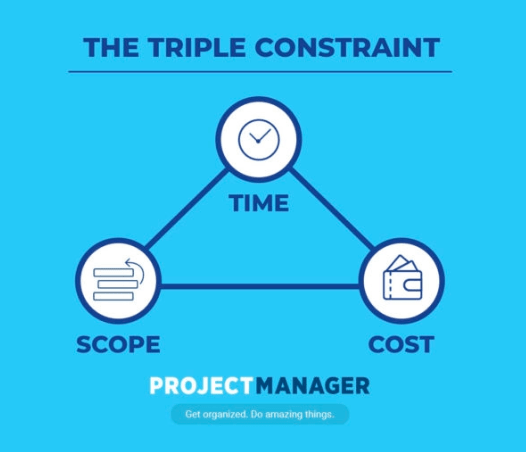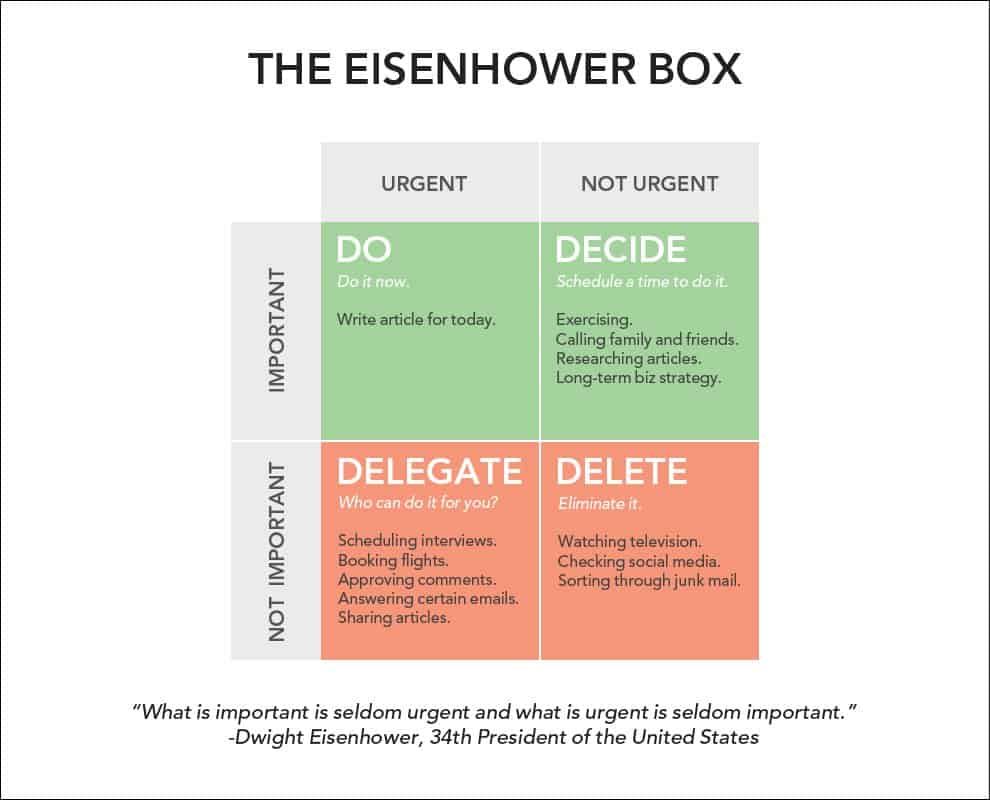Even with all of the advances in modern technology, there are only so many hours in the day to cram in everything that we need to do. A simple “to-do” list doesn’t always cut it, and it’s easy to feel adrift in a sea of tasks without an oar. The key to managing all of the work responsibilities on your plate is prioritization. In theory, prioritization is pretty simple: write down what you need to do and then start doing it. Here’s the thing about prioritization though --
it’s always changing. Every project manager knows that things come up, fall through, and get moved around. How we adapt to those changes can determine the success or failure of our effectiveness in completing that ever-growing to-do list. In this article, we’ll look at various ways to help you become a master of time management at work and keep all of those proverbial spinning plates from crashing to the ground.
1. Write out All the Things You Need to Do
Becoming a master of prioritizing will have numerous benefits. You’ll get more done, climb the job ladder faster, and have more free time to enjoy life outside of work. It all starts, though, with making a list of what you need to get done. Write down the things you need to get done at work today, tomorrow, this week, and this month. Don’t worry about the order -- we’ll get to that in a minute -- just write down everything.
2. Start by Asking: What’s Really Important Here?
Chances are, you have a pretty full list and that a good deal of them seem like the most important thing or at least top priorities. Some of these tasks may very well be top priorities, but others can probably wait. And they’re going to have to if you’re ever going to tackle the top priorities on your list. Each priority will fall under: do, defer, delegate, and delete. You don’t necessarily need to assign each priority a label just yet, as there are a few methods to help you cut through the fog.
3. The Triangle of Cost, Scope, and Time
One method that effective project managers use to help with prioritizing tasks on a large-scale project is by looking at each task as an equilateral triangle. Each priority’s side can be measured by its cost (resources needed to complete it), scope (how big the task is) and time (how long it will take to complete). Here's a graph showing the Triple Constraint, illustrated by the site Project Manager:((Project Manager:
The Triple Constraint in Project Manager: Time, Scope & Cost))

You may be able to change a particular side of the triangle, perhaps reducing the cost needed to finish it, but it will likely involve altering the scope or deadline. Put it to use: If a deadline and scope can’t be changed on a task, then perhaps that project takes top priority and compromise will have to be made with cost or the scope of other tasks.
4. Apply the Eisenhower Matrix
“I have two kinds of problems: the urgent and the important. The urgent are not important, and the important are never urgent.” —President Dwight D. Eisenhower.
It was out of this quote that the Eisenhower Matrix of prioritization((Priority Matrix:
What President Eisenhower Can Teach us About Prioritization)) was formed. Remember those do, defer, delegate, and delete labels we mentioned? Here’s where they come into play as illustrated in a graph made by James Clear:((James Clear:
How to be More Productive and Eliminate Time Wasting Activities by Using the “Eisenhower Box”))

- Urgent & Important = Do. As in, do it now.
- Important & Not Urgent = Decide. Do it later, and decide when to do it.
- Urgent & Not Important = Delegate. Give the task to somebody else.
- Not Important & Not Urgent = Delete. Don’t waste your time on it.
5. Eat the Frog… Trust Me!
If you allow procrastination to set in, then everything else will slow down and you’ll accomplish less. Mark Twain advised that if you eat the frog first (that to-do list item you’re avoiding) then the rest of the day will feel like smooth sailing. How you start your day can really establish how productive you are. Identifying and knocking out your most important task (MIT) first will set you up for accomplishing everything else.
6. Make Your Prioritization Precise With the ABCDE Method
Everything might seem important, but it’s not and there’s a way to find out what is and what isn’t. Look at each item on your list and give it a letter between A and E (with A being the highest priority). Now give each A a number in correspondence with the order you’ll do it in. Repeat the process until every task has a letter and a number. You’ll begin to notice with more clarity what really is a top priority and what’s a D2.
7. Keep Things Realistic
There’s a good chance that you’re not going to get to every single task on your list at the precise time you would like. Things change and often when you least expect them to, so it’s important to be flexible and realistic with what you can do. If you find yourself
so busy that you regularly lack the energy to accomplish your work, then you may need to take a closer look at what can be delegated and deleted.
8. Identify Your 20% Task
The
Pareto principle states that to reach true efficiency and effectiveness nirvana, you should get 80 percent of your results from 20 percent of your effort. This can be easier said than done, but there are some tips you can use to put into practice. If you could only accomplish five things what would they be? Now take away three of those. What are they? Now pick just one. That’s an MIT.
9. Stop Checking Your Email So Often
You’ve probably heard it before, but when it comes to prioritizing work like a boss, it’s worth mentioning again. Stop checking your email so often. According to a survey of nearly 20,000 working professionals, the most successful ones had a very specific trait in common -- they were incredibly good at managing incoming emails.((Money.com:
The Most Successful People Have This Trait in Common, According to a MIT Survey of 20,000 People About Productivity)) They knew how to filter which emails tied into their highest priorities and that’s what they focused on. Besides, don't make checking emails the first thing to do at work!
Here's why.
10. Revise and Reevaluate
Our lives are constantly changing and the stars are never going to always perfectly align for every single thing on your to-do list. Deadlines get pushed around, projects get dropped, and everyday life can get in the way. Senior lecturer at the MIT Sloan School of Management, Robert Pozen, recommends looking at your schedule for the next day each night before going to bed and revising and reevaluating your items as necessary.((CNBC:
An MIT study reveals 5 things highly productive people do every day—and you can start doing them today))
11. Make the Most of Modern Technology
An easy-to-use time management and planning tool can really help with knocking out all those priorities. No matter how busy your life is or how much is on your plate, keeping it all organized is going to be essential for getting most of it done. Maybe you're a Google spreadsheets sort of person or perhaps you want an app with all the bells and whistles. There are plenty of options out there, so find one that works for you and put it to use.
12. Take a Tip from Warren Buffet
A big part of shortening the path to reaching those Mount Everest long-term goals is clearing out the clutter that gets in the way. Warren Buffet reportedly told his personal pilot to make a list of his top 25 goals.((Inc.:
This Brilliant Strategy Used by Warren Buffett Will Help You Prioritize Your Time)) He then told him to circle the five most important. Everything else was to be avoided as these things may have seemingly been important, but not of enough importance to deserve the same energy as the top five.
13. Are You Delegating? Because You Should Be
The “delegate” part of the four Ds can be tricky for some people who may not feel comfortable asking for help, but it’s a crucial skill to learn. Your boss may be able to help if you reach out. The intern or new hire may be eager to learn a new aspect of how your business functions. Somebody else on your team may be more skilled at a particular task than you. If you learn to become comfortable with delegating certain duties when needed, you’ll accomplish those MITs quicker. Learn how to delegate effectively in this guide:
How to Delegate Tasks Effectively (Step-By-Step Guide)
14. The Leaky Boat Conundrum
Keep in mind when prioritizing those tasks just how valuable your time is. Time spent working towards the wrong priority is wasted time. It’s easy to start a project (the boat), but run into a change that alters its outcome or level of importance (the leak), yet we feel compelled to finish it and find ourselves paddling a sinking boat. Sometimes, the best idea is to move to a new boat rather than fix the leak.
15. Apply the 5 Whys
Developed by a Japanese industrialist,((Tuzzit:
Sakichi Toyoda)) this method for determining the importance of a priority is incredibly simple. Here’s the deal: Write down the task and why it’s important. The fewer times you have to refer back to why the task is important, the more important it is. If you need to remind yourself why it’s important numerous times, the benefit of completing the task probably isn’t that great. Learn more about the 5 Whys technique here:
How to Use the 5 Whys Method to Solve Problems Efficiently
16. Don’t Let The Bumps Derail You
There are going to be those days when the frog gets the best of you and everything on your plate looks like an MIT. Everybody has those. The important thing for any project manager, entrepreneur, or successful person in general, is going to be consistency when developing and working through that to-list. There will be leaky boats and times when there’s nobody to delegate. Take a step back, take a closer look at those work priorities, and
stay focused .
Bottom Line
We only spend around 40 percent of our workday on primary tasks, with things like checking emails, meetings, and trivial tasks eating up the rest of the day. If you learn how to prioritize effectively, however, you’ll soon find that managing that giant to-do list is easier and finishing those must-do tasks happens quicker!
More About Time Management

 You may be able to change a particular side of the triangle, perhaps reducing the cost needed to finish it, but it will likely involve altering the scope or deadline. Put it to use: If a deadline and scope can’t be changed on a task, then perhaps that project takes top priority and compromise will have to be made with cost or the scope of other tasks.
You may be able to change a particular side of the triangle, perhaps reducing the cost needed to finish it, but it will likely involve altering the scope or deadline. Put it to use: If a deadline and scope can’t be changed on a task, then perhaps that project takes top priority and compromise will have to be made with cost or the scope of other tasks.

No comments:
Post a Comment